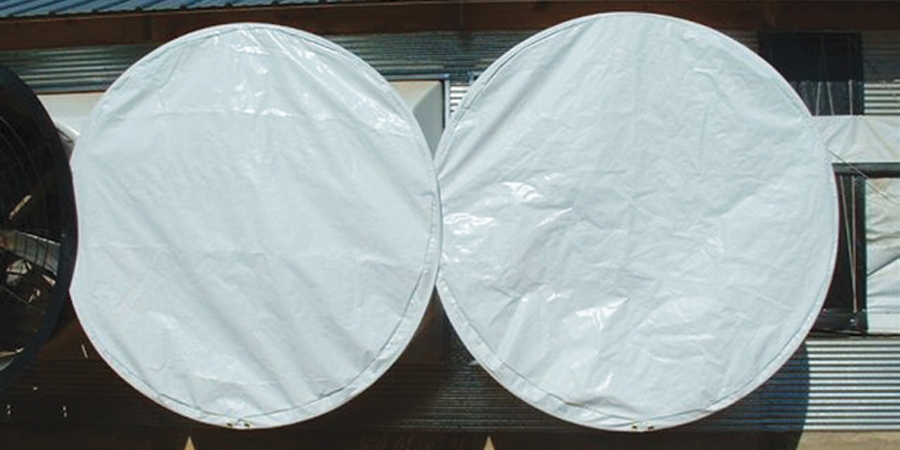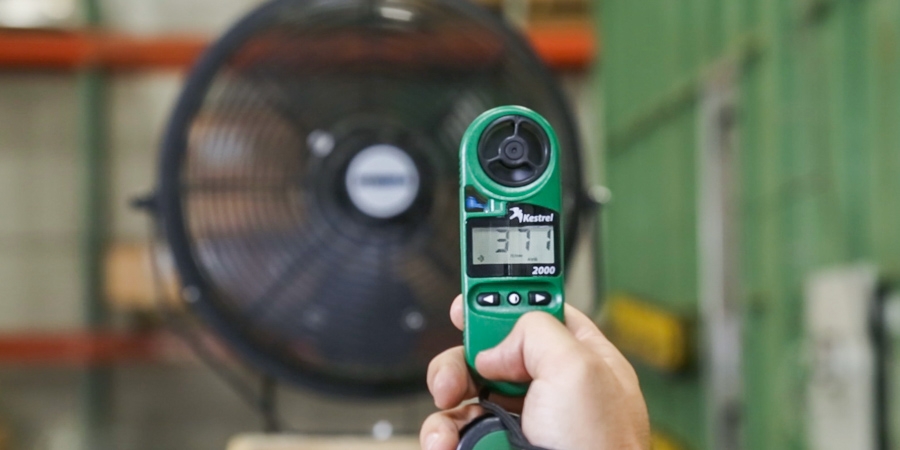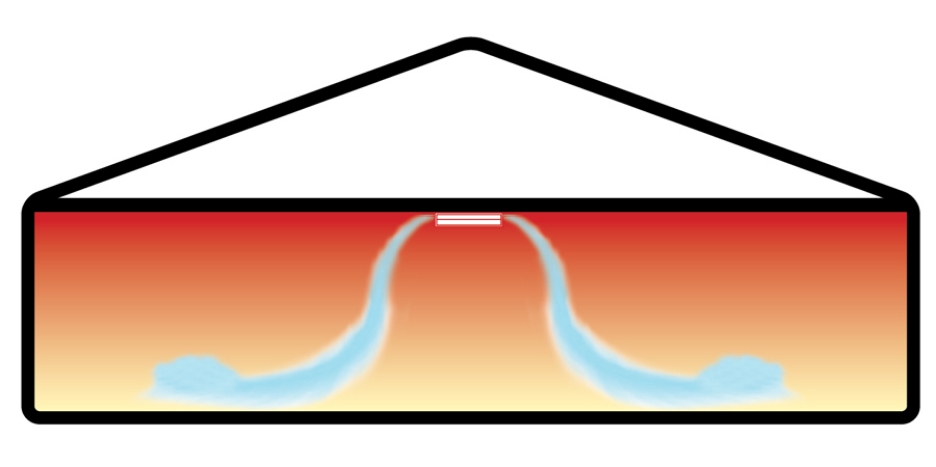Air stratification occurs when temperature variations at different heights within a building lead to uneven heating and potential energy waste. Reducing air stratification in livestock and poultry buildings maintains a comfortable environment for animals while also helping to lower heating costs. Here are some strategies to address and reduce air stratification in production buildings:
1) Insulate building shell. In colder weather, poorly insulated walls may become colder than the air inside. As a result, the air in contact with these cold walls cools down. This cooler air tends to be denser and may sink to the lower parts of the room. Improve the R-Factor of curtain-sided buildings with removable Tempshield insulation placed behind the curtains.
 |
| Fan covers prevent cold air from leaking through summer fans |
2) Seal up any air leaks. Cold outside air entering the building falls directly to the floor, creating a colder zone at animal level. Even the most minor cracks add up. For instance, a 1/4" crack around an exterior walk door equals 58 square inches, equivalent to having a 7.5" x 7.5" opening in the wall. Large summer fans have the potential for unwanted air leaks during the winter. Seal leaky shutters and install fan covers to prevent unwanted air from entering the building. For a more detailed look at this process, go to Fan Shutter Heat Loss.
3) Air Inlets. After sealing the building, check the incoming air speed from the ventilation inlets. Maintaining an air velocity of between 800 to 1,000 feet per minute allows the cold incoming air to mix with the warmer room air before falling to the floor. Use a handheld wind meter to measure air velocity. We discuss setting and maintaining air inlets in our blog Managing Transition Ventilation.
 |
| Use a wind meter to measure incoming air velocity |
4) Stir fans. Stir fans do an effective job of breaking up stratified air inside a building. Operating the stir fans at a minimum speed creates a gentle circulation pattern to mix the air layers. Forcing the warmer air to the floor reduces heating costs and produces a drier floor. Tilt the fans towards the ceiling and monitor airflow at floor level, being aware that movement more significant than 50 fpm can feel like a draft to the animals. Shop stir and circulation fans.
5) Radiant heating systems. Forced air heaters contribute to heat stratification by layering heat from the ceiling down. By contrast, gas brooders, heat lamps, tube heaters, and heat mats all put their heat at floor level. By only heating the necessary areas, zone heating systems can be more energy-efficient than uniformly heating the entire space. This targeted approach reduces energy consumption and associated costs.
By combining these strategies, producers can create a more comfortable and energy-efficient environment for their animals while reducing heating costs associated with air stratification. It's essential to tailor these solutions to each livestock facility's specific needs and characteristics.












 Україна
Україна Méjico
Méjico



